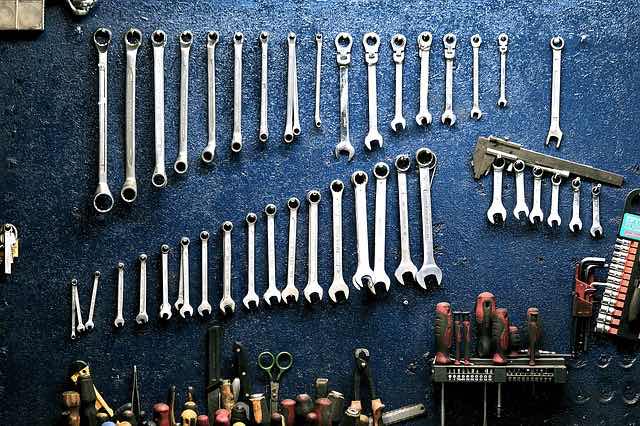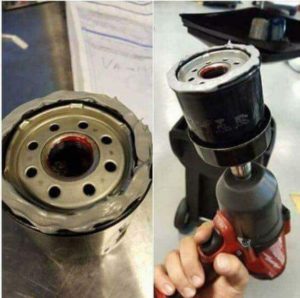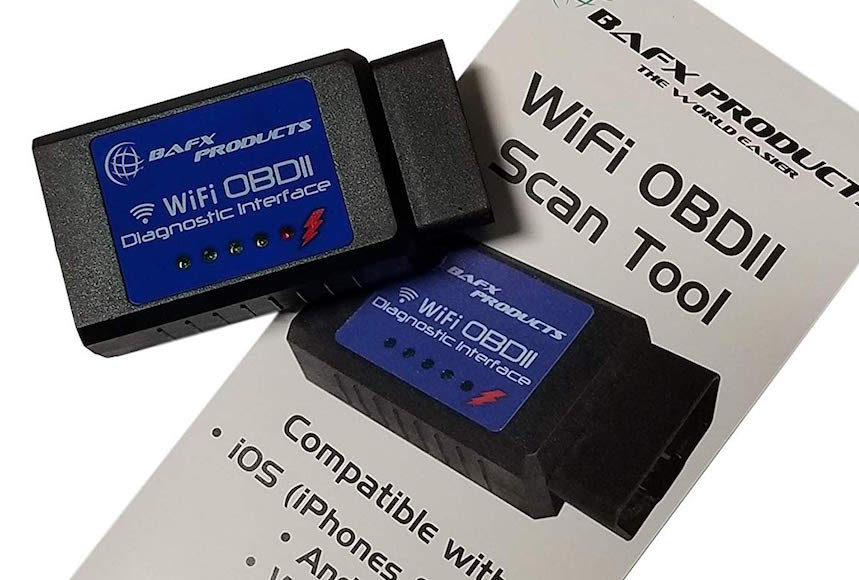A couple of months ago on the Automotive Technicians Facebook Group, I asked the community what tips they wish they would’ve learned sooner. This also involved discussion of favorite tools. After all, a favorite tool is one that makes your life easier and your repairs faster. I got a lot of great answers and some awesome tool recommendations I would have never thought of. I was looking for lessons, or tools, that many mechanics procrastinate learning or buying and it ends up keeping them back from progressing as technicians.
Over 95+ professional technicians from all over the country commented on that facebook post. I compiled the most popular tools and lessons from the group to share with you. I hope you learn some new ways to save time while doing automotive repair and avoid making rookie mistakes when buying tools.
Table of Contents
Tool #1: The Famous and Infamous Pocket Screwdriver
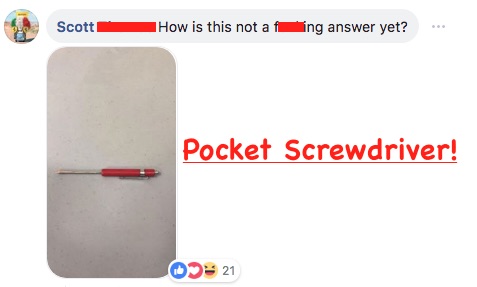
A recent post on a facebook forum got 90+ responses with the simple question of “name one use for a pocket screwdriver.” Not one answer included its actual intended use: as a screwdriver.
- Those included: shifter release, bottle opener, pry bar (not recommended), opening mail, nose picker, everything but a screwdriver, carb adjustments, release pin on extensions etc., etc.
If you want to blend in and look professional, even if you are just a DIYer you need to have a pocket screwdriver. Grab one off amazon, they’re really cheap. While you’re there you may well grab like four, you’re bound to break them, lose them, and a jealous friend will likely steal yours.
Tool #2: A Big Fancy Hammer
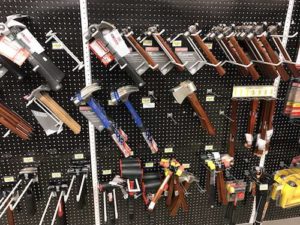
You may not realize if you’re just starting out in automotive repair, but mechanics hammers come in all different shapes and sizes. Dead blow, ball peen, sludge, etc, etc. In the mechanic’s mind, however, they all serve one purpose to break stuff loose or move stubborn items.
Without a good hammer, you won’t be a good technician. Without knowing when to use a hammer, you’ll never progress in the automotive repair world. I know it can be really intimidating to pick up a hammer and start whacking stuff on your car, but sometimes it is completely necessary.
Every mechanic has a different preference when it comes to hammers. Most professional mechanics probably own around 5-10 hammers of different sizes and shapes that look nothing like a construction hammer.
But, through my research, I weeded through all posts where people talked about their favorite hammer and I found one that keeps getting mentioned. The Armstrong 40oz dead blow ball peen hammer.
Lesson & Tool #3: Penetrating Oil is NOT all you need

Penetrating oil has its place on every mechanic’s shelf or toolbox. However, you will find, that most mechanics rely on one other tool first for those pesky rusted bolts– the torch. Now, most professional mechanics have access to oxy-acetylene torches that are expensive to buy, and bulky to store. Oxy-acetylene torches do work amazingly well and fast for getting rusty bolts red hot, however, you can get buy with a good MAP gas torch setup.
I also wrote an article on how to make your own penetrating oil here, which means you can save a lot of money on buying penetrating oil. Pro tip: heat up the seized bolt or nut and push candle wax onto the bolt allowing it to melt into the rusty area. Has saved me before.
Lesson & Tool #4: Self-tightening hose clamps don’t have to suck
If you have worked on any modern cars you have battled a self-tightening hose clamp. They’re beginning to be the industry standard, and they can be a real pain without the right tools. Honestly, I remember when I first encountered these things getting so upset and frustrated at my pliers slipping off of them that I definitely threw tools and screamed more than once.
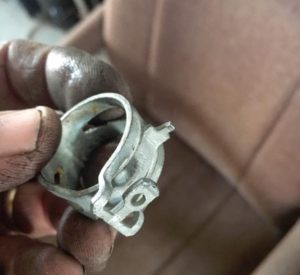
The cool thing is those tool manufacturers designed a flexible tool that grabs onto the clamp and allows you to loosen it without slipping off. They also fit into tight space and make short work of these clamps. You can fashion your own pliers to be better at gripping these clamps by grinding grooves into the pliers’ teeth, but I find it is better to just buy this specialized tool.
Many of the technicians on the group post also said this was one of their favorite tools of all time. Don’t just take it from me, go buy a self-tightening hose clamp removal tool. I found that one on Amazon for an amazing deal, click the link to check the price and reviews.
Lesson & Tool #5: Buy a Power Probe and Be Faster!
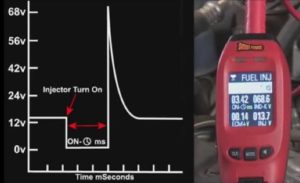
A power probe is a tool that combines the main functionalities of a multimeter, test light, and a variable power source in one. It allows you to test for good grounds, feed power, and at the same time give a circuit power or ground. All this is controlled in an easy to read digital display, and different models come with different enhancement features. They are a tool that professionals technicians absolutely love because it allows them to make short work of a lot of easy electrical diagnosis. You will still want to also have a high-quality multimeter, and if you want to be advanced at electrical diagnosis an oscilloscope, but with the power probe you will be able to do 90% of your electrical diagnosis with one tool.
I did some research to see which Power Probe model professional technicians recommend to each other to buy, and found that many recommend the Power Probe IV.



Features of the Power Probe IV (from Amazon):
- Supplies power and ground for functional component testing
- Digital volt and Ohmmeter for circuit testing
- The large Color LCD screen with easy to Navigate user menu
- Ac-rooms, AC peak to peak, frequency and pulse width for signal testing
- Fuel injector tester for easy circuit diagnosis
Make sure you also get a 5v reducer for the Power Probe:
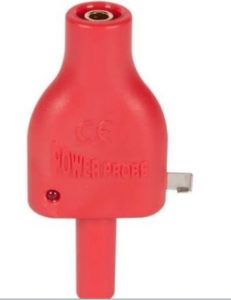
Lesson & Tool #6: Cordless Tools Save Your Life
It doesn’t matter what brand you choose, there are a ton of great tools out there, the reality is you just need to be using cordless tools in 2018 to speed up your repairs. Air tools are great and all, but people are finding that cordless tools can do a lot of the same things like air and require much less setup. For air tools, you need a compressor, hoses, electricity and many times they’re slower than cordless tools (RPM wise).
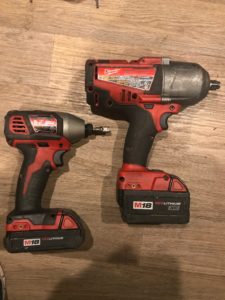
The reality is if you’re doing any automotive repair, motorcycle repair, whatever it may be all you need to do is take a drill and slap an adapter driver set in it. That link will take you to Amazon, of an adapter set that I found is amazingly well priced and useful. All you need to do is slap that into your drill, and now you can break loose small bolts easily, and zip off already loosened larger bolts.
Why I love my Milwaukee Drill Set + 1/2″ Impact Driver:
The drill set I use and one that I love for everything from fixing stuff around the house, to automotive repair is this Milwaukee M18 Impact/Drill set. I found the best price on Amazon here, and this set also comes with a charger and two batteries.
From there you can add on other Milwaukee tools to fit your budget. For example, because I wanted to be able to break lug nuts loose and other large nuts (like axle nuts) with a cordless gun I bought the Milwaukee 1/2″ fuel high torque driver. It uses the same batteries and allows me to quickly swap between tools and batteries.
My main advice, and that of many professional mechanics to people just getting starting out doing their own automotive repair is to not tire yourself out removing bolts by hands. You can speed up your repair time by just breaking the bolt loose first by hand, then swapping the socket over to your drill, and zipping it off. This is a big difference between a newbie mechanic and someone that has been working on cars for years.
We know when to save ourselves and our energy, and new mechanics don’t realize the power of power tools.
Lesson #7: Remember to use your head
The biggest lesson many technicians would love for people wanting to work on their own cars is to use their head.
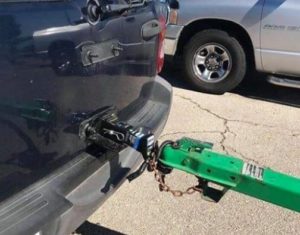
People put themselves at risk all the time and endanger the people around them by doing shotty car repair themselves.
It is important to be humble in the beginning, and ask for help from a professional when you need it. I highly recommend finding a DIY automotive repair shop near you that allows you to rent a lift space.
A lot of these places will also have a technician on staff that is on standby to help you out if you get stuck. I researched all about these places in California, including lots of tips for first-time renters read my article here.
Big No No’s if you’re just getting started working on your car —
- Duct tape is not the answer to everything
- JB Weld is not to be used on top of duct-tape to reinforce the repair.
- RTV is also not JB Weld, and more RTV does not always mean a better seal. I spent 100’s of hours researching how to use RTV correctly and what the different kinds mean. Please read that article before using RTV here.
- Youtube is a good start, but not the answer to everything. Remember many professional technicians do not post on Youtube because this is their career job. They want to go home after work, and not talk about work. Therefore, on Youtube, you get a lot more entertainment mechanics that don’t necessarily promote safe practices. Just take it with a grain of salt!
-
Yes, that is JB Weld on an oil filter. Don’t talk to a professional mechanic like he is a thief that doesn’t know what they’re talking about. I can assure you some of the best mechanics are some of the worst at customer service. They aren’t there to pamper you, because their job is to fix your car, make it safe, and get you in and out. They don’t get paid to talk to you, and a good mechanic will be so busy he will only have a few minutes to spare. Listen to what they say, do what they tell you, and thank them for the help!
Are there crooked mechanics?
Obviously, there are crooked mechanics who take advantage of people.
However, they are not the majority, and if you read Yelp reviews for shops you should be able to get a good idea of who is good/bad.
My best advice is to find a mechanic that specializes in your type of car! Especially if whatever you’re driving is a 2010 or newer. Find the shop that specializes just in that make of car. They will be much better equipped with diagnostic equipment and experience, compared to the shop that works on every car brand.
If you’re a beginning DIYer technician and want to know some cool tricks to do an oil change, I wrote an awesome article combining techniques from aviation maintenance and car maintenance. Read the article here, trust me you probably didn’t know these tricks.

